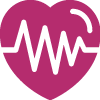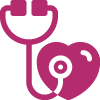What is an AED Machine?
Sudden cardiac arrest can happen to anyone at any moment. It occurs when the heart’s electric system stops pumping blood. The result is a sudden collapse and loss of consciousness.
In such a case, rapid treatment with AEDs, or automated external defibrillators, can be lifesaving. AEDs are lightweight and portable devices that can help revive someone from a sudden cardiac arrest.
AEDs automatically analyze the heart rhythm. When needed, they deliver an electric shock to jolt the heart back to a normal rhythm.
Let’s take a look at the different types of AEDs, how they work, the training required to operate them, and FDA regulations you should know.
Types of AEDs
AEDs are made for public as well as professional use. They can be either semi-automated or fully-automated.
Let’s first understand the two types of AEDs based on their location and the training required to operate them.
- Public Access AEDs: You can find public access AEDs in public locations like schools, airports, offices, community centers, gyms, and malls. These can be used by the general public with minimal training in first aid courses.
- Professional Use AEDs: These are found in more professional settings, such as hospitals and ambulances. First responders who have additional AED training, like emergency medical technicians and paramedics, usually operate these devices.
Differentiated Based
AEDs can also be differentiated based on their level of automation.
- Semi-Automated AEDs: These machines first analyze the victim’s heart rhythm. In case of an abnormal heart rhythm, the machine will prompt you to press a button. This will help deliver a defibrillation shock.
- Fully-Automated AEDs: Unlike semi-automated defibrillators, fully-automated AEDs themselves deliver a defibrillation shock if an abnormal heart rhythm is detected. That means you don’t have to press any button during the process.
How do AEDs Work?
An AED system works just like any other defibrillator. The device sends shocks to the heart to help revive the victim of cardiac arrest.
When you turn on the AED, the device first offers voice prompts to guide you. You will need to attach electrodes (two sticky pads with sensors) to the chest of the victim.
The electrodes will send information about the victim’s heart rhythm to a processor, which will then analyze the victim’s heart rhythm. This will help determine whether an electric shock is needed.
If necessary, the AED will prompt you to press a button to deliver the shock. In fully-automatic AEDs, the device will deliver the electric shock without any user intervention.
Training Required to Use AEDs
AEDs are simple to use, but proper training is needed in order to operate them. You can get basic training from any health organization. Or you can opt for online courses.
These will teach you how to recognize the first signs of cardiac arrest, when to call the emergency helpline, how to perform CPR, and the steps to use an AED.
Defibrillation is time sensitive. For each minute of delay, the chances of survival decrease by 7% to 10%. Training to use AEDs can help save a life before first responders arrive at the scene.
FDA-Approved AEDs
The US Food and Drug Administration (FDA) reviews AEDs and their accessories, like batteries and electrodes, for safety and effectiveness. It also closely monitors reports of machine malfunctions from users and manufacturers.
It’s best to ensure that the AEDs and AED accessories you use are FDA-approved. If your device doesn’t appear on the list, it’s considered a “legacy device.” While it can still be used, it’s safer to transition to an FDA-approved device.
Given the importance of AEDs in emergency situations, using FDA-approved devices will increase the survival rate while decreasing other risks of using legacy devices. You will also be more confident in using FDA-approved devices in life-threatening situations.
What is an AED Machine – Wrap Up
AEDs check the victim’s heart rhythm through sticky electrodes. The device analyzes whether defibrillation is needed. If it is, the device delivers a defibrillation shock to help the heart re-establish a regular rhythm.
AEDs make it possible to quickly respond to a case of cardiac arrest. These devices are lightweight, portable, and easy to use even by non-medical people.
They are now commonly available in public places, including malls and gyms. This helps offer quick medical aid to victims of cardiac arrest.
